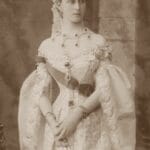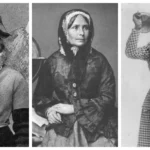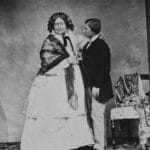The Life and Legacy of Daniel Parke Custis
Daniel Parke Custis, a name often overshadowed by his wife’s later renown as Martha Washington, holds a significant place in early American history. His life, though cut short, intertwined with the economic and social fabric of colonial Virginia, and his legacy, through his substantial wealth, played a crucial, albeit often overlooked, role in shaping the nation’s destiny. This article seeks to illuminate the life of this wealthy planter, exploring his origins, his family life, the mysterious circumstances of his death, and the profound impact of his inheritance on the nascent United States.
Early Life and Inheritance (1711-1750)
Born on October 15, 1711, at the “Queens Creek” plantation in York County, Virginia, Daniel Parke Custis entered a world of privilege as the son of John Custis IV (1678-1749) and Frances Parke Custis. He inherited not only considerable wealth but also the social standing that accompanied such affluence in colonial Virginia. This inheritance included vast tracts of land and, unfortunately, a large number of enslaved people, a stark reality of the time that significantly contributed to his economic power. Details about Custis’s early life and activities before his marriage remain limited, an area ripe for further historical research.
Marriage, Family, and Social Standing (1750-1757)
In 1750, at the age of 39, Custis married Martha Dandridge, a young widow with two children. The considerable age difference between them, she being 16 and he 37, suggests social dynamics worthy of further investigation regarding marriage norms in colonial Virginia. His father initially disapproved of the match, yet the union ultimately took place, connecting two prominent Virginia families. The couple had four children: Daniel Parke Custis II, Frances Parke Custis II (both of whom tragically died young), John Parke “Jacky” Custis, and Martha Parke “Patsy” Custis. These family dynamics likely brought both joy and sorrow into Custis’s life, a common experience in an era characterized by high childhood mortality. Beyond his family life, Custis was a successful planter and a prominent member of Virginia society. Some evidence suggests involvement in local politics, possibly serving as a vestryman at St. Peter’s Church, indicating a man engaged in his community. He maintained a close relationship with David Conrod, a political ally and friend, which placed Daniel Parke Custis at the forefront of Virginia politics. This hints at a sphere of influence extending beyond his own estates, though the extent of his political activities warrants further exploration.
The Mystery of His Death and Its Repercussions (1757)
Tragedy struck in the summer of 1757 when Daniel Parke Custis died unexpectedly at the age of 45. The exact cause of his death remains a subject of debate among historians. While some attribute it to a heart attack, the more prevalent theory suggests a severe throat infection, possibly akin to strep throat or its more dangerous complication, quinsy. In the 18th century, without the benefit of modern antibiotics, such infections could prove rapidly fatal. The limited medical knowledge of the era and the scarcity of detailed records make it difficult to determine the precise nature of the illness, leaving room for continued research and speculation. Adding to the complexity of the situation, Custis died intestate—without a will. This seemingly simple oversight had profound consequences. His vast estate, comprised of land, money, enslaved people, and other assets, was divided according to the legal framework of the time. Martha inherited one-third outright (her dower share), while the remaining two-thirds were held in trust for their surviving children, Jacky and Patsy. This division of wealth would later prove pivotal in George Washington’s life and, arguably, in the unfolding narrative of the nascent United States.
A Legacy Intertwined with American History
While Daniel Parke Custis may not be a household name, his story offers a glimpse into the complexities of wealth, inheritance, and the often-unseen connections that shaped early American history. He was more than just Martha Washington’s first husband; he was a prominent figure in colonial Virginia society, a successful planter, a possible political player, and, perhaps unintentionally, a crucial contributor to the founding of a nation. When Martha later married George Washington, her inherited wealth became intertwined with his. This substantial increase in resources likely played a significant role in enabling Washington to pursue his political ambitions and, later, to finance his military campaigns during the Revolutionary War, often without accepting a salary. It’s worth pondering how history might have unfolded differently without this financial foundation. The Custis estate, a source of immense wealth, including land and enslaved people, became a cornerstone of the Washington family’s prominence and played a role in the early economic landscape of the nation. Further research into the specific inventory of the Custis estate could reveal its true size and scope, enriching our understanding of its impact.
George Washington Parke Custis: A Bridge Across Generations
The story of Daniel Parke Custis extends beyond his own life through his grandson, George Washington Parke Custis, often called “Wash.” Wash was not a blood relative of George Washington but rather his stepgrandson. His father, John Parke Custis, was Martha’s son from her first marriage. When Martha married George Washington, John became George’s stepson, and Wash, in turn, became his stepgrandson. Following John Parke Custis’s death during the Revolutionary War, George and Martha Washington raised Wash and his sister, Eleanor, at Mount Vernon. This unique upbringing likely shaped Wash’s worldview and influenced his later decisions. He inherited considerable wealth and property from both his father and grandfather, Daniel Parke Custis. Using this inheritance, he built Arlington House, a magnificent mansion overlooking the nation’s capital, which later became the site of Arlington National Cemetery. Wash also became a writer, authoring books about his life with George Washington, offering invaluable insights into the private life of the first president.
Unanswered Questions and Ongoing Research
Ongoing historical and genealogical research continues to shed light on the life and legacy of Daniel Parke Custis. The uncertainties surrounding his death, the complexities of his estate, and the extent of his political involvement offer fertile ground for further exploration. Future research might reveal a more complete picture of his contributions to colonial Virginia society and his indirect but significant impact on the course of American history. Studying the lives of the enslaved people who lived and worked on the Custis plantations is crucial for a more comprehensive understanding of this period. Furthermore, exploring the lives of his surviving children, Jacky and Patsy, can illuminate how their father’s wealth and connection to George Washington shaped their destinies.
Conclusion
Daniel Parke Custis, though often relegated to the footnotes of history, emerges as a figure of considerable importance when viewed through the lens of his wealth, family connections, and the ripple effects of his untimely death. He was more than just Martha Washington’s first husband; he was a wealthy planter, a likely community leader, and, through the inheritance that passed to his wife and children, a crucial, albeit indirect, contributor to the founding and early development of the United States. His story serves as a reminder that history is often shaped by the convergence of individual lives and broader historical currents, and that even those figures who stand in the shadows can cast a long and influential reach.
- Unlock Elemental 2 Secrets: Actionable Insights Now - April 2, 2025
- Lot’s Wife’s Name: Unveiling the Mystery of Sodom’s Fall - April 2, 2025
- Photocell Sensors: A Complete Guide for Selection and Implementation - April 2, 2025
















